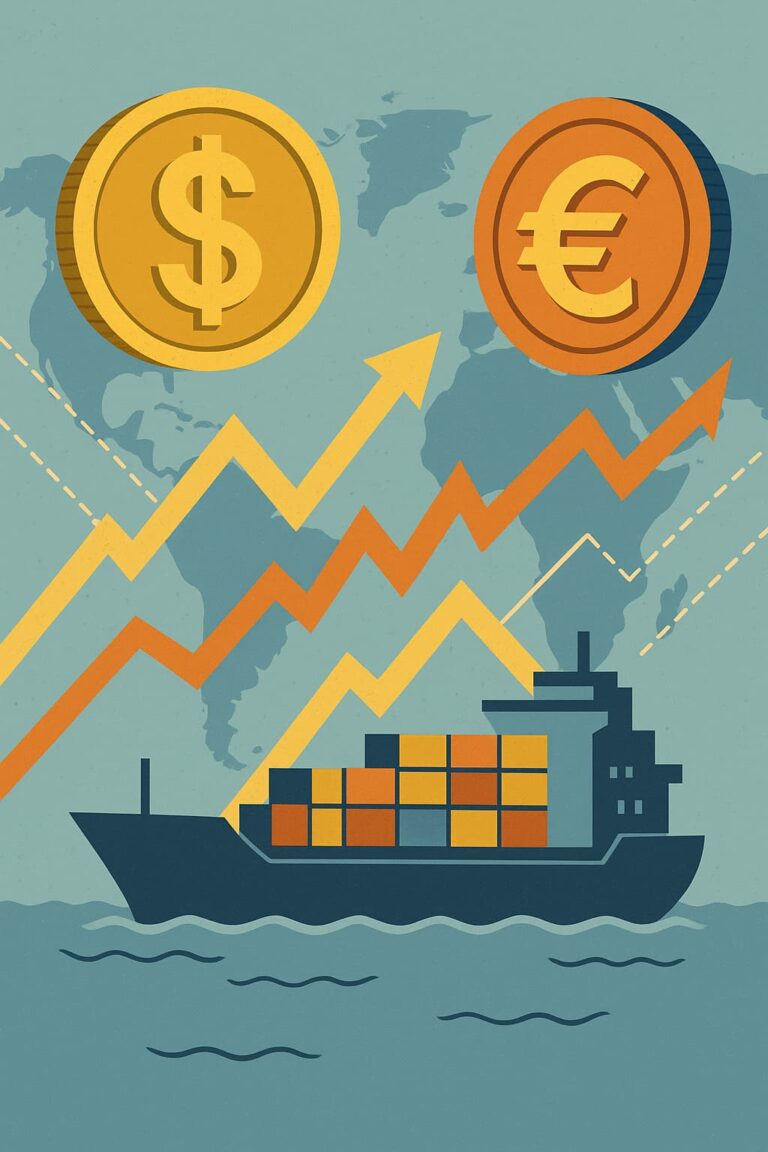Whether you’re planning to invest, grow your savings, or simply understand the news better, knowing how financial markets work is essential. Yet, for many beginners, the world of finance can seem confusing—full of jargon, charts, and fast-paced changes.
This guide will break down the basics of financial markets in a simple, easy-to-understand way—so you can grasp what they are, why they matter, and how you can participate wisely.
What Are Financial Markets?
Financial markets are places—both physical and digital—where people buy and sell financial assets, such as:
- Stocks
- Bonds
- Commodities (like gold or oil)
- Currencies (like USD or EUR)
- Cryptocurrencies (like Bitcoin)
- Derivatives (contracts based on other assets)
These markets exist to facilitate the exchange of money and risk, helping individuals, companies, and governments manage their finances and grow wealth.
Why Do Financial Markets Exist?
Financial markets serve several important purposes:
- Raise Capital: Companies sell stocks or bonds to fund growth.
- Provide Liquidity: Investors can buy or sell assets quickly and easily.
- Determine Prices: Prices are set through supply and demand.
- Share Risk: Investors can hedge or spread risk across different assets.
- Create Wealth: Markets allow people to grow their savings over time.
Types of Financial Markets
Let’s explore the major types of financial markets and how they work:
1. Stock Market
This is where people buy and sell shares of companies. A share (or stock) represents partial ownership of a business. If the business does well, the stock price may go up.
- Primary Market: Where companies issue new shares (e.g., during an IPO).
- Secondary Market: Where investors trade existing shares (e.g., on the New York Stock Exchange or NASDAQ).
Example: Buying Apple stock means you own a small piece of Apple. If Apple profits rise, the value of your share might increase.
2. Bond Market
In the bond market, investors lend money to governments or corporations. In return, they receive interest payments over time.
- Government Bonds (e.g., U.S. Treasury bonds) are considered safer.
- Corporate Bonds can offer higher returns but may carry more risk.
Example: Buying a $1,000 bond with 5% interest means you’ll earn $50/year until it matures.
3. Commodities Market
This is where raw materials like oil, gold, coffee, or wheat are traded. Prices fluctuate based on supply, demand, weather, politics, and more.
Example: Investors might buy gold as a safe haven during economic uncertainty.
4. Foreign Exchange (Forex) Market
The Forex market is where currencies are bought and sold. It’s the largest financial market in the world, trading over $6 trillion daily.
Example: If you travel to Europe, you may exchange dollars for euros. Traders do this at scale to profit from exchange rate changes.
5. Cryptocurrency Market
A newer type of financial market where digital currencies like Bitcoin and Ethereum are traded. These are decentralized and use blockchain technology.
Example: Investors may buy crypto expecting its value to rise in the future, similar to stocks.
How Prices Are Determined
Prices in financial markets are driven by supply and demand.
- If more people want to buy an asset than sell it, the price goes up.
- If more people want to sell than buy, the price goes down.
Other influencing factors include:
- Company performance (for stocks)
- Interest rates (for bonds)
- Global events (for commodities and currencies)
- Market sentiment (investor confidence or fear)
Who Participates in Financial Markets?
Financial markets are made up of many players, including:
- Retail Investors: Everyday people like you and me.
- Institutional Investors: Banks, hedge funds, pension funds.
- Traders: People who buy/sell frequently to profit from price changes.
- Governments: Issuing bonds or regulating markets.
- Companies: Seeking capital by selling shares or debt.
How Can You Start Investing?
If you’re new to financial markets, here’s how to get started:
1. Set Financial Goals
Decide why you want to invest—retirement, buying a home, building wealth.
2. Build an Emergency Fund
Before investing, ensure you have savings for emergencies (3–6 months of expenses).
3. Choose an Investment Account
Open a brokerage account or use an investing app like:
- Robinhood
- Fidelity
- Vanguard
- eToro (for global/crypto access)
4. Diversify Your Portfolio
Don’t put all your money in one stock. Spread it across different sectors and asset types.
5. Think Long-Term
Markets go up and down. The key is patience. Historically, the stock market has grown over time despite short-term volatility.
Risks and Rewards
✔️ Benefits of Investing:
- Grow your money
- Beat inflation
- Earn dividends or interest
- Achieve financial independence
❌ Risks Involved:
- Market crashes or volatility
- Poor investment choices
- Lack of liquidity
- Emotional decisions
Tip: Learn to manage risk by educating yourself, diversifying, and avoiding emotional trading.
Common Financial Market Terms (Glossary)
| Stock | Ownership in a company |
| Bond | A loan made to a company or government |
| ETF | A basket of assets you can invest in like a stock |
| Dividend | Share of profits paid to shareholders |
| Bear Market | Market is falling or pessimistic |
| Bull Market | Market is rising or optimistic |
| Liquidity | How easily an asset can be sold |
| Volatility | How much the price of an asset fluctuates |
Final Thoughts: Financial Markets Are for Everyone
Financial markets may seem overwhelming at first, but they’re not just for Wall Street professionals. With the right knowledge and tools, anyone can participate and build wealth over time.
Start small, stay informed, and think long-term. The more you learn, the more confident you’ll become in making smart financial decisions.
Remember: You don’t need to be rich to start investing—but starting to invest can help you become financially stronger.





